The thrill of the Premier League amplified? That's the magic of Fantasy Premier League (FPL)! But with so many players and decisions, beginners can feel overwhelmed. Fear not, aspiring FPL managers! This guide equips you with 10 essential tips to dominate your mini-league and climb the global rankings.
For tips on the best players and team reveals, visit our Latest Content section. While loads of our information is free, our best tools - including the Elite Team Reveal and AI recommended transfers - are available exclusively to fantasy football fix Premium members.
Get fantasy football fix Premium – check out the latest offers now!
In this blog, we'll unveil the secrets used by experienced FPL players to build a winning squad, navigate tricky transfers, and maximise your points. So, whether you're a die-hard Premier League fan or a curious newcomer, this guide is your roadmap to FPL success.
The pre-season squad you put together before the Gameweek 1 deadline is the foundation of your Fantasy Premier League (FPL) campaign. If you don’t get your opening squad right, you will spend the first 6-8 Gameweeks putting out fires.
A common mistake newcomers to FPL make is focusing too much on a particular area of the squad, to the detriment of the other positions. When the season begins, the up and coming, in-form players will start to emerge and it is impossible to tell which position they come from. Managers who have focused their budget in one place will lack the flexibility to make quick transfers to capture these emerging players. A much better idea is to have a nice spread of players from different price points across all your positions.
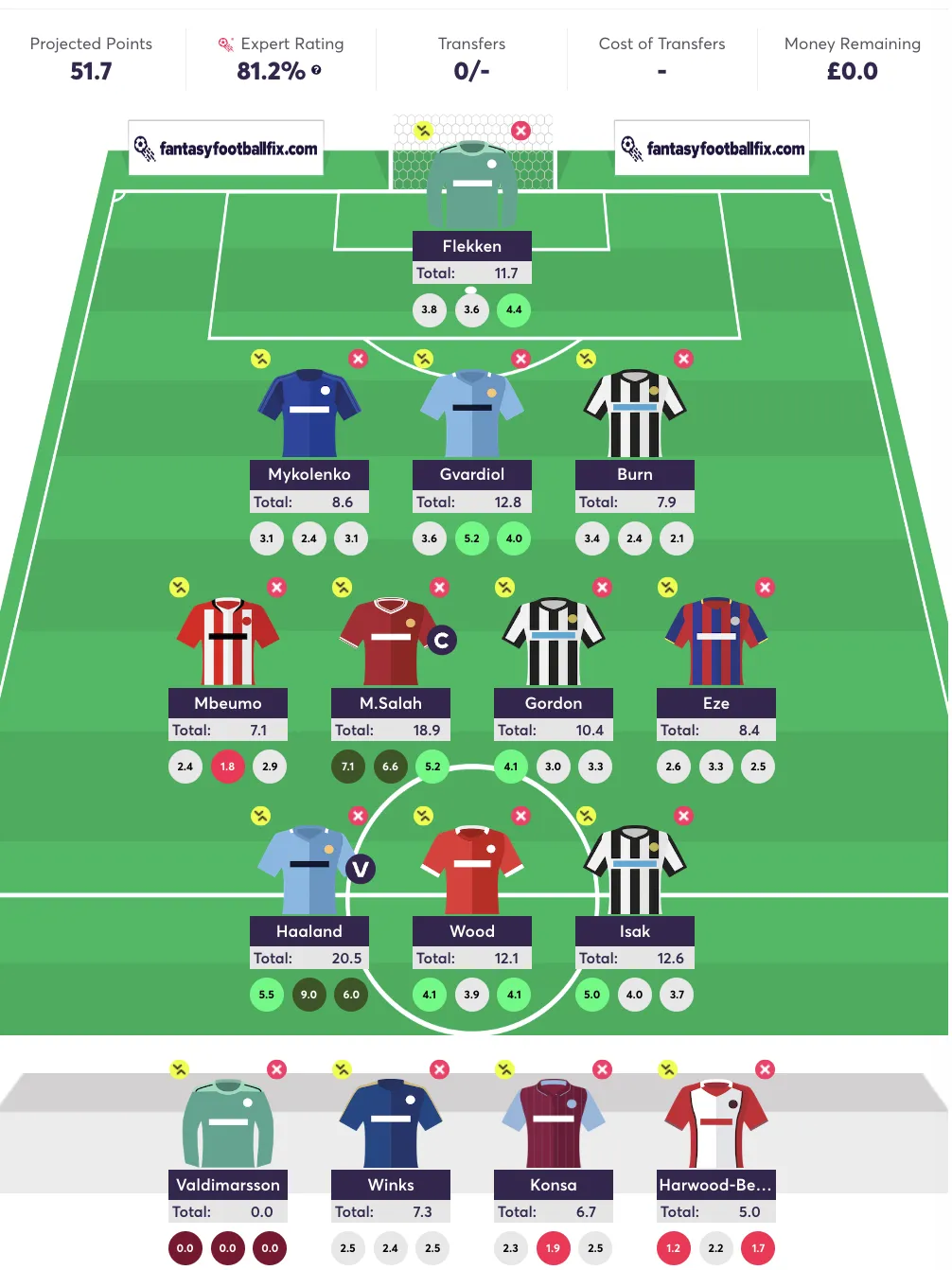
For help with your Gameweek 1 squad, you can always use the Future Planner tool shown above. You'll be able to create up to five drafts and compare the projected points for each one.
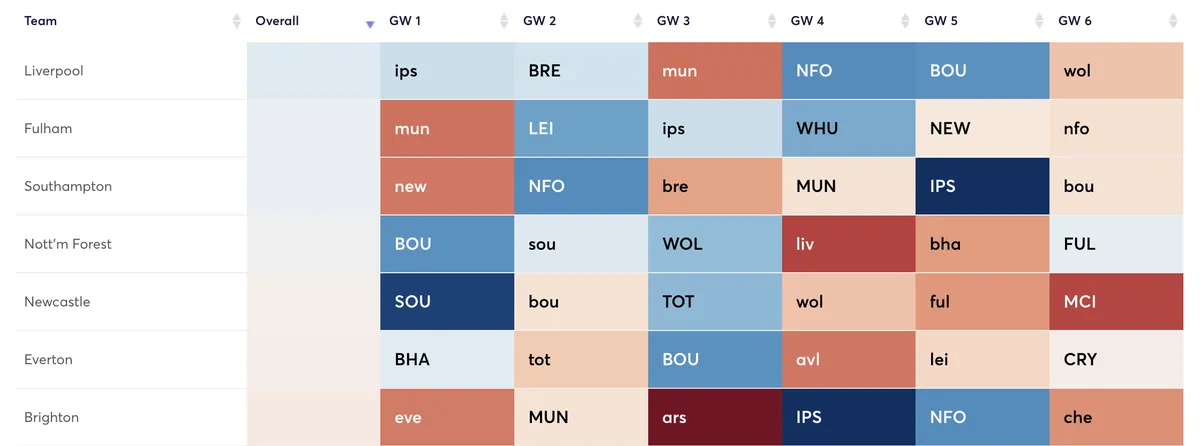
The Fixture Planner shown above is an invaluable tool for strategising.
The best, and most expensive FPL assets, have the capacity to return in any fixture, but they are more likely to score big against weaker opposition. Likewise, cheaper FPL assets are considerably more likely to be kept quiet against difficult opposition.
To increase your chances of points returns, your transfer decisions should be made with reference to the upcoming fixture schedule. At any given time, a number of teams will be going through a rough patch of fixtures, while others will be facing easier opposition.
Transferring out players who have tough fixtures to bring in players who are about to embark on a run of good fixtures, is one of the most efficient ways of gaining more FPL points.
The Fixture Planner is a great tool to keep an eye on the Premier League schedule. It looks at the schedule from the perspective of both defensive and attacking difficulty to help predict the likelihood of your transfer target(s) keeping a clean sheet and/or getting an attacking return against the opposition.
In pre-season, much of the big, exciting Premier League news comes from new player signings, be they inter-club, or from overseas. As a result, these players are often in the forefront of FPL managers’ minds and, often, the temptation to include them in the squad can be very great.
The problem is that we don’t know what the Premier League managers have in mind for their new signings. Quite often, they become part of a different system or are rotated with existing players competing for the same spot. Occasionally there are teething issues where the – once brilliant – player in question needs time to adjust to the new squad. Having an abundance of these types of players can cause hell during the opening Gameweeks. A much better idea is to target solid, reliable picks who you know will be first choice, and have Premier League pedigree.
One of the most common mistakes beginners make is to ‘chase’ points which have already been earned, often sacrificing perfectly good assets in the process. During an FPL campaign, a lot of the points you earn will be from players who you were considering getting rid of. Likewise, a lot of blanks you miss will be from players who scored a one-off hat trick in the previous Gameweek.
It takes a lot of self-discipline not to be overly reactive in FPL. A good way of viewing decisions is to make them for a block of time (say, 4 or 6 Gameweeks) then keep faith in your transfer decision for that period. Then your focus (and precious free transfers) can be spent on repairing other areas of your squad.

Using the Predicted Points & Stats tool allows FPL managers to stay one step ahead.
Many FPL managers can be guilty of overthinking captaincy options. It can be very satisfying when your unusual captaincy pick returns big, when the more popular captaincy options blank, but occasions such as this are the exception rather than the rule.
More often than not, players like Mo Salah and Erling Haaland are the safest bets due to their ability to consistently return points and their potential to make multiple returns in the same game. Going against these assets on a regular basis often results in heart break.
If a premium asset has a good fixture, try not to overthink matters. There may be occasions where two premium assets both have good fixtures, in which case you may have a genuine dilemma. In this situation, tools such as Player Points Projections can help you predict which players will score more points using the Fix Algorithm.
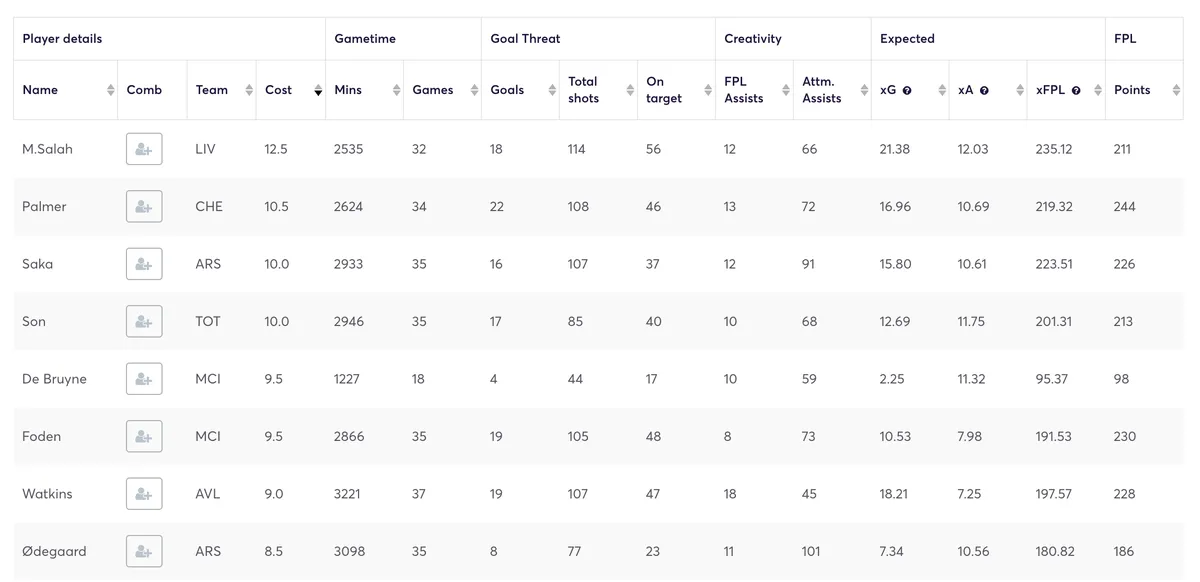
The Opta Stats Sandbox tool enables FPL managers to back up their eye test beliefs.
The beauty of the eye test is twofold. Not only is it great fun to watch players on the football pitch with your scouting hat on, but you often pick up little nuances that the stats can sometimes miss. The major drawback to the eye test is that most people can’t watch 10 Premier League fixtures every single weekend.
This is where stats come into their own. Underlying data and expected metrics offer a complete picture of who the key players were on any given Gameweek, and cumulatively throughout a season. The Opta Stats Sandbox is a great place to find relevant FPL stats with easy-to-use filters to customise the data you see.
A combination of both eye test and stats is the best way to scout your next transfer.
No matter how experienced an FPL manager you are, there’s a good chance you will spend chunks of the season dealing with squad issues. Players will get injured, dropped or suspended. Many new managers have a tendency to ignore these issues, instead spending their transfers on the latest ‘must have’ player.
The problem with this is that sooner or later, these issues will come home to roost and become greater than your bench can handle. If an expensive FPL asset gets a long-term injury or stops being first choice, then this needs to be dealt with straight away to maintain the future health of your squad. Nothing is more demoralising than earning zero points from a player with no cover on the bench.
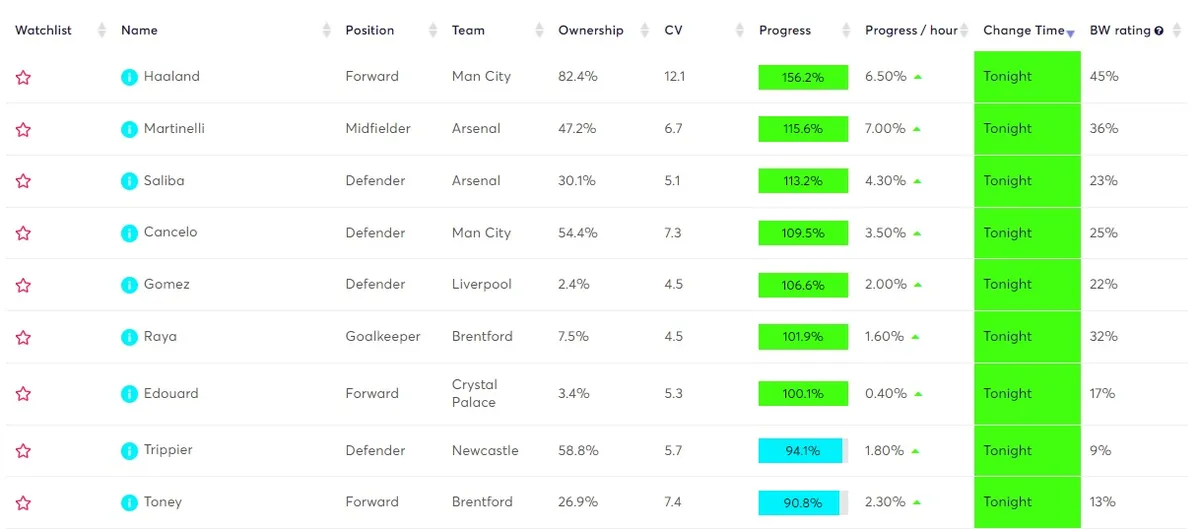
Knowledge is power. Most of the time, FPL managers can get away with making an early transfer (that is to say, making their transfer early in the week). But every now and then, disaster strikes. Your early transfer picks up a knock in training, or comes off with a hamstring injury in the midweek Europa League fixture. This is an FPL nightmare.
If you can, wait until Friday after the press conferences have concluded. If your transfer target is a doubt to play, then you should find out about it here, meaning your precious free transfer won’t be wasted.
Every so often, player price changes will mean you could be priced out of your desired transfer, in which case moving early is unavoidable. You can check the Price Change Predictor to see if any of your players or transfer targets are due to change in price overnight.
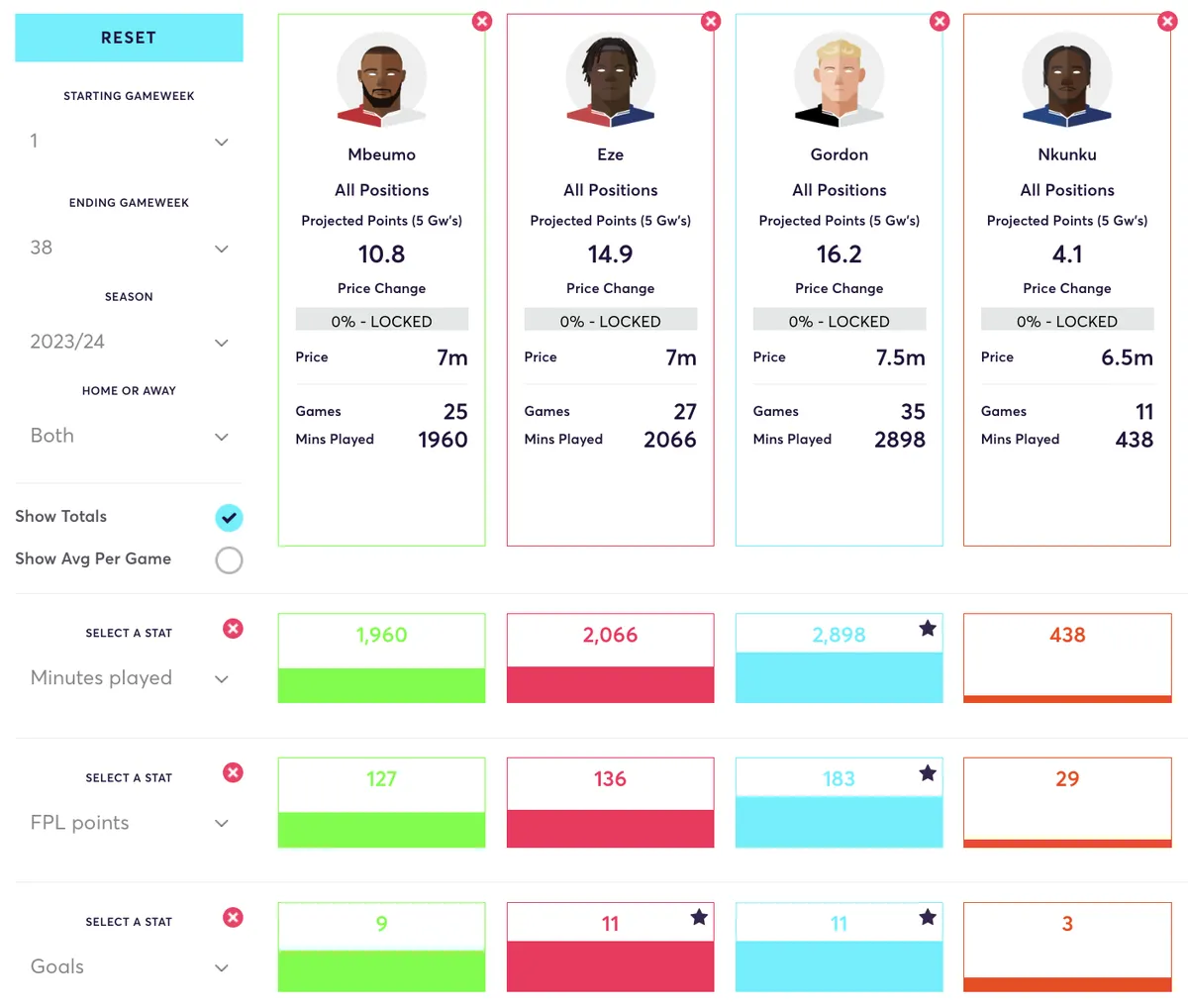
This is often very hard to do, as transfers are our primary tool for navigating the season. A simple transfer policy to stick by goes like this: identify the players you own who are in poor form and have difficult fixtures coming up. Then swap those players for ones who are in good form and have easy fixtures coming up.
Quite often, the answer will then become clear. For those times when two options present themselves, the Opta Player Heatmaps tool allows for detailed direct comparison between two players.
When more than two players are ticking all the boxes, then the Fix Comparison Matrix (shown above) allows you to compare key statistics for up to five different players.
FPL is an emotionally charged game. For engaged managers, the good Gameweeks can bring immense highs, and the bad Gameweeks can be demoralising and ruin your mood. It is important to remember that FPL is a game and, on balance, should bring you happiness.
It is important to note that luck is an ever-present factor in FPL and sometimes, despite doing everything right, you can have an awful Gameweek and watch your rivals get ahead. At these moments, draw a line in the sand. Take a little break from it and come back strong for the next Gameweek deadline.
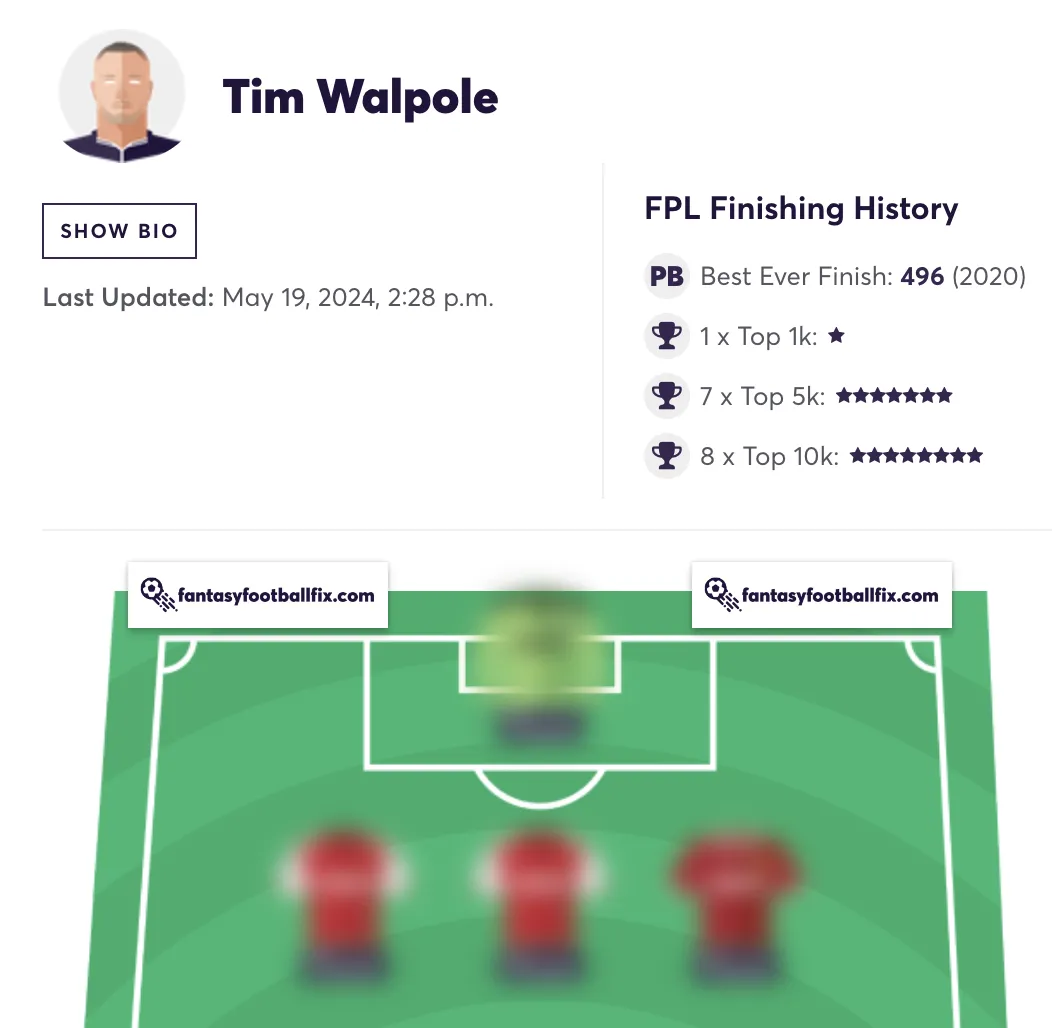
Could this season be the season you get a top 10k finish? Our team reveal managers have achieved over 80 top 10k finishes! Click here to see the Elite Team Reveals and follow their every move.
Join 89% of our members who won their main mini-league last season.
TRY IT NOWAlready a Premium user? Login here
© fantasyfootballfix 2024 | Terms of Use | Privacy Policy | Contact Us